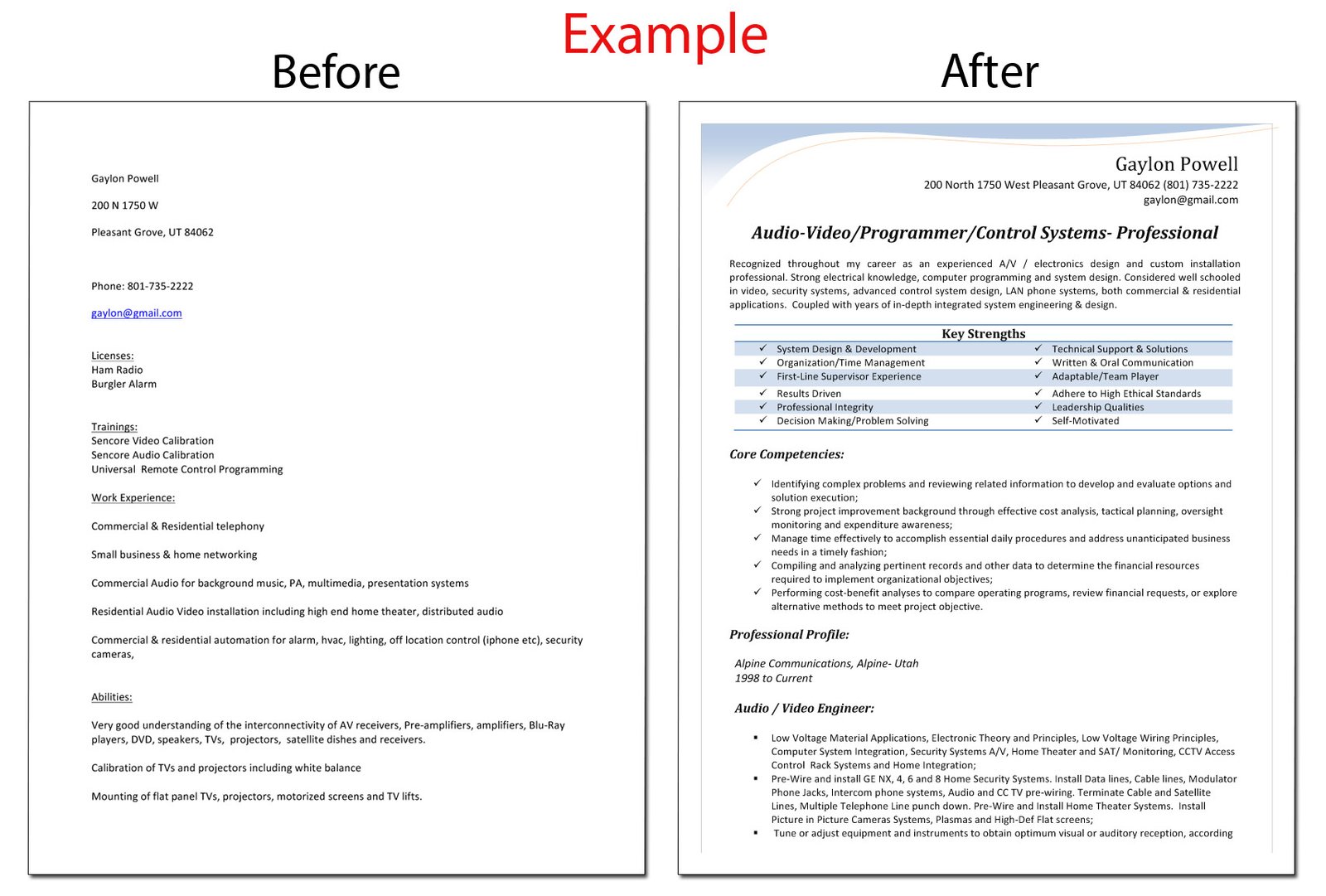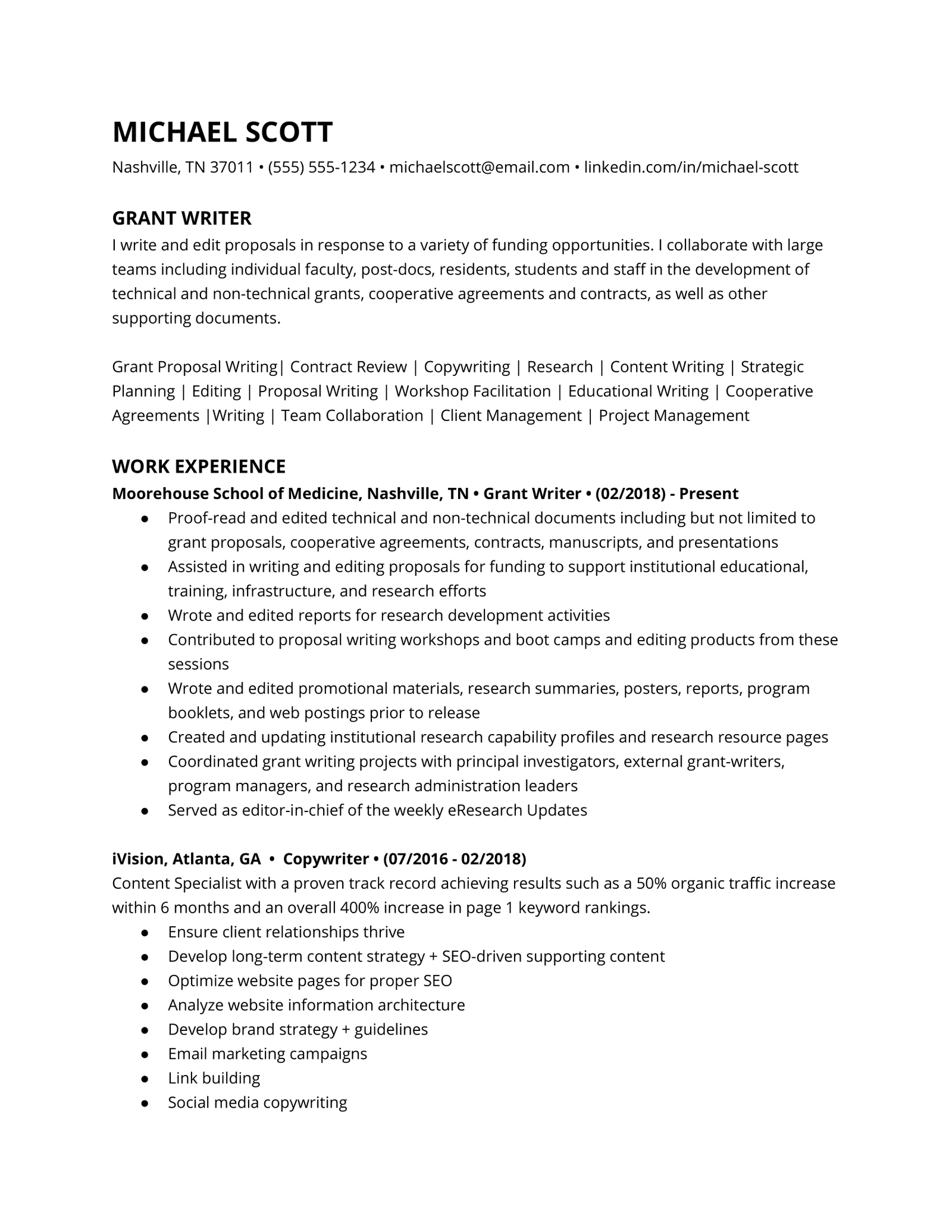Description
Feeling lost in today’s highly competitive job market and challenging economy? Don’t worry, I’m here to help you succeed!
As an HR specialist experienced in international corporate recruiting, I assisted thousands of applicants to secure jobs at top-tier companies. I offer an insider’s view of the recruitment process, a deep understanding of ATS systems, and a unique ability to showcase your strengths that will make you stand out from the crowd. Let me unlock your potential and propel your career, whether it’s your first job, a promotion, or a bold career/industry change!
With my Premium package, you’ll receive:
- A high-impact, achievement-based resume with a standout design, ATS-friendly template, and keyword optimization.
- A personalized cover letter, crafted for your target job.
- A LinkedIn optimization document based on an in-depth analysis of your profile.
Don’t let your dream job slip through your fingers. Looking forward to working together!
Introduction to Professional Document Writing
In today’s competitive job market, the significance of meticulously crafted professional documents cannot be overstated. A well-written CV, resume, and cover letter serve as your first impression on potential employers, effectively setting the stage for your career trajectory. Understanding the unique roles and purposes of these documents is crucial for job seekers aiming to stand out in a crowded field.
The curriculum vitae (CV) is a comprehensive document that encapsulates an individual’s academic achievements, work history, skills, and accomplishments. It is particularly relevant in academic, research, and medical fields, where detailed information on one’s educational background and publications is often required. In contrast, a resume is a more concise document, typically one to two pages long, tailored to highlight relevant skills and experiences for a specific job. Its brevity and targeted content make it ideal for most professional job applications.
A cover letter, on the other hand, serves as a personalized introduction to your application. It allows you to elaborate on your qualifications, demonstrate your knowledge of the company, and explain why you are an ideal fit for the position. This document provides an opportunity to convey your enthusiasm and articulate how your skills align with the company’s needs, often making it a pivotal component of your application.
The impact of these documents on job applications and career advancement is profound. A well-crafted CV, resume, and cover letter can significantly enhance your chances of securing an interview, thereby opening doors to new career opportunities. Conversely, poorly written or generic documents can undermine your qualifications, regardless of your actual experience or skills.
Attention to detail and customization are paramount when preparing these documents. Tailoring your resume and cover letter to each specific job application shows potential employers that you have invested time in understanding the role and the company. This personalized approach not only demonstrates your professionalism but also increases the likelihood of your application being noticed.
In essence, mastering the art of professional document writing is a critical skill that can greatly influence your career progression. By recognizing the distinct purposes of CVs, resumes, and cover letters, and by paying meticulous attention to their content and presentation, you can effectively position yourself as a strong candidate in the eyes of prospective employers.
Understanding the CV: Structure and Content
A Curriculum Vitae (CV) is a detailed document that outlines an individual’s academic and professional history. Unlike a resume, which is typically concise and tailored for specific job applications, a CV provides a comprehensive overview, making it particularly suitable for academic, scientific, and international job applications. The primary objective of a CV is to present a complete picture of one’s qualifications, achievements, and professional trajectory.
A well-structured CV typically includes several key sections:
Contact Information
The contact information section should be placed at the top of the CV, including your full name, phone number, email address, and, if applicable, links to professional profiles or personal websites.
Personal Profile
This brief section provides a summary of your professional persona, highlighting your career objectives and core competencies. It should be concise yet impactful, offering a snapshot of your qualifications.
Education
The education section should list your academic credentials in reverse chronological order, starting with the most recent degree. Include the institution’s name, degree obtained, and graduation date. It’s advisable to mention any honors or distinctions received.
Professional Experience
Detail your work history in reverse chronological order, starting with your most recent position. For each role, include the job title, employer, dates of employment, and a brief description of key responsibilities and achievements. This section should emphasize your professional growth and the relevance of your experience to the position you are applying for.
Skills
Highlight relevant skills that complement your work experience and education. These may include technical skills, language proficiencies, or other competencies pertinent to the job.
Publications
This section is particularly crucial for academic and research positions. List your publications in reverse chronological order, including the title, publication date, and any co-authors. If applicable, provide a brief description of the research focus.
References
Finally, include a section for references, listing the names and contact information of individuals who can attest to your qualifications and professional demeanor. Ensure that you have obtained their consent before including their details.
Consistency and chronological order are vital in crafting a compelling CV. Each section should be clearly delineated and formatted uniformly to ensure readability. By adhering to these guidelines, you can create a CV that effectively communicates your qualifications and enhances your prospects in academic, scientific, and international job markets.
Crafting an Impressive Resume
A resume is a concise document that summarizes an individual’s professional qualifications for a specific job role. Unlike a Curriculum Vitae (CV), which provides an extensive overview of one’s academic and professional history, a resume is typically limited to one or two pages, focusing on the most relevant experiences and skills. Primarily used in the corporate and private sectors, resumes are tailored to highlight an applicant’s suitability for a particular position, thereby increasing their chances of standing out to potential employers.
The essential components of a resume include the header, objective or summary statement, work experience, education, skills, and certifications. The header should contain your name, contact information, and a professional email address. An objective or summary statement, positioned at the top, provides a brief snapshot of your career goals or key qualifications. This section is crucial for capturing the hiring manager’s attention and should be tailored to align with the job description.
When detailing work experience, list your positions in reverse chronological order, starting with the most recent. Each entry should include the job title, company name, location, and employment dates, followed by bullet points describing your responsibilities and accomplishments. Use action verbs, such as “developed,” “managed,” or “implemented,” to convey your contributions effectively. Quantify your achievements where possible, as this adds credibility and impact to your claims.
The education section should also be organized in reverse chronological order, listing degrees, institutions, and graduation dates. Include any honors or relevant coursework that may enhance your candidacy. The skills section should highlight both hard and soft skills pertinent to the job, such as proficiency in specific software, languages, or project management abilities. Lastly, certifications, licenses, or any professional training relevant to the job should be clearly listed.
To make your resume stand out, tailor it to each job application by incorporating keywords from the job description and emphasizing the skills and experiences most relevant to the role. This not only demonstrates your genuine interest but also helps your resume pass through Applicant Tracking Systems (ATS) that many employers use to screen applications.
Writing a Persuasive Cover Letter
A cover letter serves as a critical supplement to your CV or resume, offering you the opportunity to introduce yourself more personally and highlight aspects of your background that make you an ideal candidate for the role. It bridges the gap between your resume and the job position by providing reasons why you are a good fit for the company and the specific role.
The structure of a cover letter is essential to its effectiveness. Begin with a header that includes your contact information, followed by the date and the employer’s contact details. The greeting should be professional, ideally addressing the hiring manager by name. This personal touch can make a significant difference.
The introduction of your cover letter should be compelling and to the point. State the position you are applying for and briefly mention how you found the job listing. This section should capture the reader’s attention and motivate them to read further.
In the body of the cover letter, focus on addressing the employer’s needs and demonstrate your enthusiasm for the role. Highlight relevant skills, experiences, and achievements that align with the job requirements. Utilize specific examples to illustrate your qualifications and show how they can benefit the employer. This part of the cover letter should not just reiterate your resume but provide additional context and insights into your professional journey.
The closing of your cover letter should reiterate your interest in the role and express gratitude for the opportunity to apply. Politely suggest the next steps, such as an interview, and indicate your availability.
Personalization is crucial in a cover letter. Avoid generic content that could apply to any job or any employer. Tailor each cover letter to the specific job and company, demonstrating that you have done your research and are genuinely interested in the position.
Common Mistakes to Avoid in CVs, Resumes, and Cover Letters
When crafting a CV, resume, or cover letter, certain common mistakes can significantly hinder your chances of landing an interview. One of the most prevalent errors is the presence of typos and grammatical mistakes. These errors not only reflect poorly on your attention to detail but also suggest a lack of professionalism. Therefore, it is crucial to meticulously proofread your documents and, if possible, have them reviewed by a trusted friend or professional.
Another frequent issue is overly lengthy documents. Hiring managers often have limited time to review each application, and long, dense documents can be off-putting. Aim for a concise and clear presentation of your skills and experiences. For CVs, limiting the length to two pages is generally advisable, while resumes should ideally be one page. Cover letters should be succinct yet comprehensive, usually not exceeding one page.
Lack of focus is another pitfall. Each document should be tailored to the specific job you are applying for, highlighting the most relevant experiences and skills. A one-size-fits-all approach may save time, but it often fails to address the unique requirements of each job, thereby reducing the effectiveness of your application. Customize your CV, resume, and cover letter for each position to demonstrate genuine interest and suitability.
Finally, consider the visual appeal and structure of your documents. Using professional templates can enhance readability and ensure a polished appearance. There are numerous resources available online that offer high-quality templates. Additionally, seeking feedback from career advisors or using professional services to review your documents can provide valuable insights and improvements.
By avoiding these common mistakes and paying attention to detail, you can significantly improve the quality of your CV, resume, and cover letter, thereby increasing your chances of securing an interview and ultimately, the job.
Tailoring Your Documents for Different Industries
Tailoring your CV, resume, and cover letter to different industries is essential in capturing the attention of hiring managers and demonstrating your suitability for specific roles. Each industry has its unique set of expectations, skills, and terminologies, and aligning your documents with these can significantly enhance your chances of standing out.
When customizing your documents, start by identifying the key skills and experiences that are in high demand within the target industry. For instance, in the tech sector, proficiency in programming languages, software development, and project management methodologies might be crucial. Highlight these skills prominently in your CV and resume. Conversely, if you are applying for a role in the healthcare industry, emphasize your clinical experience, patient care skills, and knowledge of healthcare regulations.
Using industry-specific keywords and terminology is another critical aspect of customization. These keywords often appear in job descriptions and are used by Applicant Tracking Systems (ATS) to filter candidates. By incorporating relevant terms, you increase the likelihood of your application passing the initial screening. For instance, an applicant for a marketing role might include terms like “SEO,” “content strategy,” and “market analysis,” whereas someone in finance might prioritize “financial modeling,” “risk assessment,” and “compliance.”
Researching the company and the specific job description is also vital. Understanding the company’s mission, values, and recent projects can help you align your documents with their expectations. Mentioning specific initiatives or aligning your experience with the company’s goals can demonstrate your genuine interest and fit for the role. Additionally, tailor your cover letter to address the hiring manager by name if possible, and directly reference the job description to highlight how your background aligns with their needs.
Ultimately, tailoring your CV, resume, and cover letter for different industries requires a strategic approach. By emphasizing relevant skills, using industry-specific terminology, and demonstrating a thorough understanding of the company and role, you can significantly enhance the effectiveness of your job applications.
Leveraging Technology and Online Tools
In today’s digital age, technology has revolutionized the way we approach CV, resume, and cover letter writing. Various tools and technologies are available to assist individuals in crafting professional and effective documents. Online resume builders, for instance, have become increasingly popular. These platforms provide users with pre-designed templates, guiding them step-by-step to create visually appealing and well-structured resumes. Additionally, these tools often include keyword suggestions, helping users to tailor their resumes to specific job descriptions.
Grammar checkers are another invaluable resource for job seekers. Tools like Grammarly and Hemingway not only correct grammatical errors but also enhance the overall readability of the text. They offer suggestions for improving sentence structure, word choice, and clarity, ensuring that the final document is polished and professional. Formatting tools, such as Microsoft Word’s built-in features or specialized software like Adobe InDesign, can further refine the appearance of a CV or resume, making it stand out in a competitive job market.
One of the critical aspects of modern job applications is ensuring that documents are Applicant Tracking System (ATS)-friendly. ATS are used by many employers to filter and rank applications based on specific criteria. To optimize a resume for ATS, it is essential to use standard headings, avoid complex formatting, and include relevant keywords from the job description. This increases the likelihood of the resume passing through the initial screening and reaching the hands of a hiring manager.
Beyond written documents, professional networking sites like LinkedIn play a crucial role in the job application process. A well-crafted LinkedIn profile complements a resume by providing a dynamic and interactive platform to showcase one’s professional journey. It allows for the inclusion of endorsements, recommendations, and a portfolio of work, offering a more comprehensive view of a candidate’s capabilities. Networking on LinkedIn can also lead to valuable connections and opportunities, further enhancing one’s job search efforts.
Incorporating these technologies and online tools into the job application process not only streamlines the creation of professional documents but also maximizes the chances of success in securing desired positions.
Final Tips for Success and Continuous Improvement
As you embark on the journey of crafting your CV, resume, and cover letter, it is essential to recognize that these documents are not static. Regular maintenance and updates are crucial to ensuring they accurately reflect your evolving skills, experiences, and achievements. Set a reminder to review and revise your professional documents at least twice a year, or immediately after significant career milestones such as a job change, promotion, or completion of a major project.
Continuous improvement is key to staying competitive in the job market. Consider enrolling in courses or attending workshops tailored to your industry. These educational opportunities not only enhance your expertise but also provide fresh content to add to your CV and resume. Staying informed about the latest industry trends is equally important. Subscribe to relevant newsletters, follow industry leaders on social media, and participate in professional forums to ensure your knowledge remains current and relevant.
Self-reflection and feedback are invaluable tools in refining your professional documents. Take the time to critically assess your CV, resume, and cover letter from the perspective of a hiring manager. Are they clear, concise, and compelling? Seek constructive feedback from trusted colleagues, mentors, or career coaches who can offer insights into areas of improvement. Remember, even the most well-crafted documents can benefit from an external perspective.
Lastly, perseverance is vital in the pursuit of your career goals. The job search process can be challenging and often requires resilience and determination. Stay motivated by setting achievable short-term goals and celebrating small victories along the way. Keep in mind that each application, interview, and networking opportunity is a step forward in your career journey. With dedication and a commitment to continuous improvement, you will master the art of CV, resume, and cover letter writing, positioning yourself for success in the ever-evolving job market.





Reviews
There are no reviews yet.